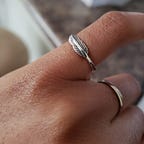Audrey Hepburn.
We all know her name, we’ve all seen her movies, but did you ever stop to think how she became one of the 20th Century’s leading symbols for womanhood?
With her skinny waist, short hair, and thick eyebrows, she single-handedly changed the way leading ladies looked in Hollywood. In the age of Elizabeth Taylor and Marilyn Monroe, Audrey Hepburn held her own as she ushered in a new era of femininity and fundamentally changed the way movie audiences perceived women.
To see how this change happened, we must go back to the early 50s to understand what the average leading lady in a post-war America looked like.
The early 1950s in America was all about leisure, drive-through restaurants, and post-war affluence. It saw the rise of modern-day jazz, television, and societal conformity. As World War II ended, the characters in the film world were usually conventional portrayals of your average, everyday men and women.
Movie audiences sought after these pictures because they felt something was missing. After the war finished, people wanted to feel a sense of normalcy again, that’s why movies like an American in Paris, The Band Wagon and Singin’ in the Rain(among many others) were so popular.
But, with conformity, comes rebellion.
American adults might’ve been okay with it, but what about their kids? This rebellion saw the rise of actors and actresses like Elizabeth Taylor, Marlon Brando and Marilyn Monroe in grittier, more down to earth motion pictures like Niagara, A Streetcar Named Desire and A Place in the Sun.
The movies that they starred in quenched the thirst that these teenagers were yearning for. Brando had his rugged, method acting ways (along with others like James Dean and Montgomery Clift), and Marilyn and Liz were sex symbols that women could aspire to be like.
Fast forward a few years and inevitably, there was a backlash to the backlash.
Younger women were sick and tired of the unattainable beauty standards that these actresses were portrayed on the silver screen. Liz Taylor was once famously called an “eternal one night stand” by her then-husband Richard Burton and Marilyn, well, she’s Marilyn Monroe.
Fortunately, these objectors would get their chance to feel ordinary when a 5'7" dancer from England waltzed into Hollywood to steal the hearts and minds of the American public.
When Roman Holiday was released in 1953, it was greeted with critical and financial success.
Co-starring Gregory Peck and written by a blacklisted Dalton Trumbo, the movie took home three Academy Awards, including Audrey Hepburn for Best Actress in a Leading role. Not only was director William Wyler lauded for his directorial efforts, but the film also saw the meteoric rise of Hepburn.
Only 24 years young, Hepburn was a refreshing change from the curvier/sexier movie stars of that era. Not only did she manage to win an Oscar on her film debut, but she also brought radical change to the way women dressed.
While men (both young and old) could enjoy the company of a Liz Taylor or a Marilyn, younger women felt that they could comfortably copy Hepburn’s look without feeling inadequate.
In other words, Hepburn made being slim a positive instead of a negative.
However, there were some setbacks to this.
As the years went by, women thought the only way to be chic and fashionable was to be stick thin and own a little black dress. Of course, that is one way, but that’s not what Audrey represented.
If you were to look up some interviews with an older Audrey Hepburn (like this one here with Barbara Walters) you would see that the secret of Audrey’s success was to be yourself.
In 1954 fashion photographer Cecil Beaton, called Hepburn the, “public embodiment of our new feminine ideal,” and that sentiment still rings true. Her look is was so minimal and simple, that it’s considered a fashion faux pas if you don’t have it.
That’s how powerful Hepburn’s footprint was. When everyone was wearing heels and skirts, she was comfortable in ballet flats and slim black slacks.
Audrey Hepburn changed Hollywood ideals for the better, and for that, I thank her.
